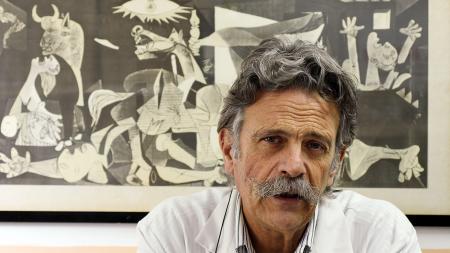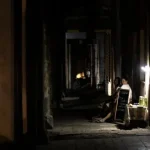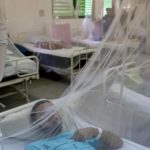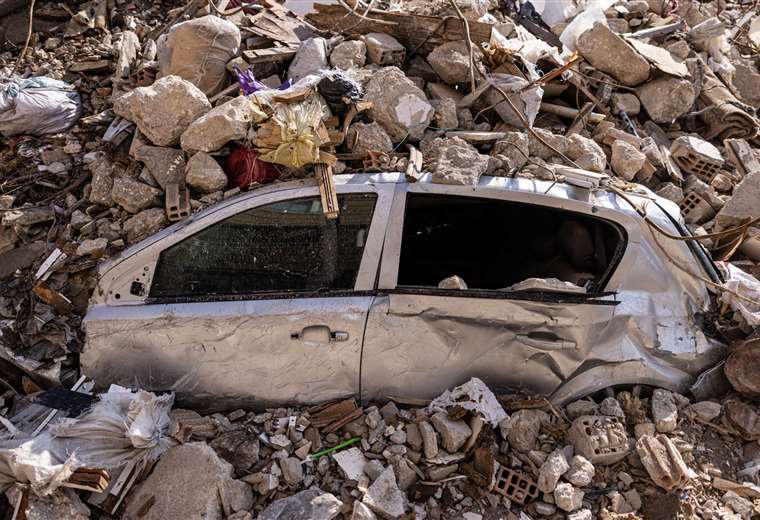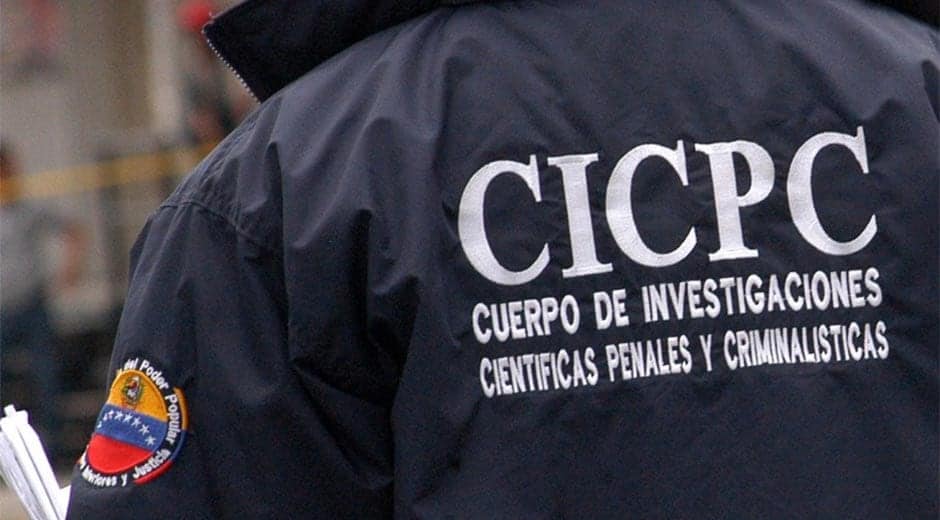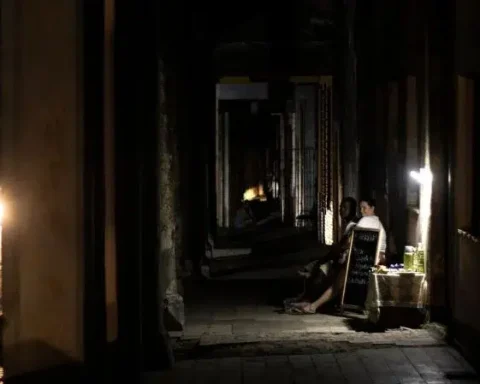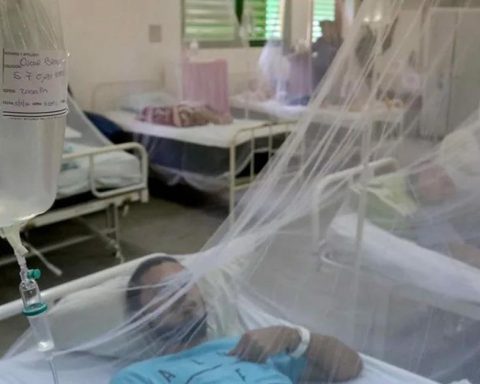Born in Quilmes, Buenos Aires province, Tomás Orduna (65) is a member of the Argentine Society of Infectious Diseases (Sadi) and was a member of the committee of experts whose mission was to provide advice to the national government when the coronavirus became a nightmare.
In addition to recently retiring from the Muñiz Hospital, where he worked for 42 years, he also said goodbye to his academic facet at the state level: He retired from the University of Buenos Aires (UBA), where he taught Infectious Diseases for 31 years.
One day after launching the retired label, but far from the classification of passive personnel, he agrees without excuses to a one-on-one with Telam-Trust.

From the fight against AIDS in the 1980s to the crisis generated by SARS-CoV-2, through the entry of cholera into the Americas, the first autochthonous case of leishmaniasis in Misiones or the outbreak of trichinosis in Gualeguaychú, Entre Ríos, Orduna reviews his career, the achievements and the challenges of public health, without leaving aside the troubles inherent to his profession such as death.
What critical situation marked your medical career?
I think that the most difficult moment, the hardest in terms of care, was from the end of the 80s to the mid-90s, at the height of the HIV-AIDS pandemic-epidemic. I entered the Muñiz Hospital in 1981 thinking that we were going to cure all infectious diseases, taking into account the explosion of antibiotics that there was: we already had treatment for diseases such as leprosy, tuberculosis, we cured pneumonia.
And all of a sudden, the massive impact on our hospital is from ’87; and from then until 1996 it was a crescendo of brutal impact where we saw young people die, which generated great impotence.
Today retirement came to a teacher, a friend, a great infectologist and a better person. Professor Tomas Orduna. pic.twitter.com/bjJzkMS1Iu
— Viviana Leiro? (@LeiroViviana) January 31, 2023
I have memories of leaving the hospital door crying, driving my car, because I left someone in a lucid dying situation and with the conviction that the next day, when I returned, that person would not be there.
We did not have the possibility of having the strength of hope because there was none and that was terribly painful, anguishing, frustrating.
I don’t remember something so strong like this in another era until the Covid pandemic hit.
What things are there in common between the Covid-19 pandemic and the HIV-AIDS pandemic? What are the differences?
What was the year 2020 and the first part of 2021, sometimes I found myself talking about the Covid pandemic and referring to those moments of the HIV-AIDS pandemic, although with differences.
For example, those who died from Covid have generally been from older age groups, including older people, compared to AIDS, who died in 20- or 25-year-old kids.
The overwhelming nature of the Covid pandemic, due to the number of people affected, for all that it implied, having to cease inter-human relations, was not the case with the HIV-AIDS pandemic because family and friends could be with that positive patient.

The Covid pandemic, in addition to developing a serious condition or causing death, added loneliness. A terrifying loneliness. They are two models, two different situations, both had their impact, one longer and the other shorter in years but with that much more sinister element of solitude.
What tropical diseases did you have to deal with at the Muñiz Hospital?
In the years 91, 92, cholera in the Americas. It was something very powerful when we saw his entry in January 1991 in Callao, Lima, Chimbote (Peru) after 30 or 40 years even more.
In Argentina it entered in a very calm way, few cases and an expansion very focused on the NOA. We were very scared but what we had seen a year before in Peru did not happen.
Cholera marked as a very powerful emergent for infectologists and I lived through it. I volunteered to work in the north and went to Bermejo, Bolivia, to work.
After 97, 98 dengue came upon us, I remember that we went with my teacher and two other colleagues to Natal, Brazil, to receive training on the response to dengue and in the summer of 98 we had the first autochthonous cases in Salta, and from from there a new pathology was installed that, depending on the year, gives us headaches as was the first great epidemic in 2009, then 2016 and the one in 2020 that overlapped due to the Covid pandemic and was blurred. However, there were more than 10,000 reported probable cases.
Beyond the epidemics, we have always had some pockets of dengue, with 2,000 or 3,000 cases.

And as far as Travel Medicine is concerned…
We have had a constant of exotic, parasitic, sometimes bacterial diseases that we constantly diagnose with the return of people from other continents or from tropical areas such as the Amazon (Brazil). Argentina is free of malaria and in 2011 it was the last autochthonous case, but we always continue to see malaria imported by those who travel. Leishmaniasis in travelers, a pathology that Misiones has.
Is there a tropical disease that we have beaten?
I would say that we have concluded the eradication of the autochthonous transmission of malaria, malaria that is the product of the person who began to wage that battle, which was Ramón Carrillo with his people. In 1949, Carrillo, appointed Secretary of Health, called his university classmate, Dr. Carlos Alvarado, and appointed him director of the Malaria Eradication Program.
And we went from having between 200 and 300 thousand cases of malaria in the mid-’40s and we reached the year ’50 to less than 2 thousand cases in Argentina.

This great triumph of the program could only be crowned in 2018, with the certification of the World Health Organization and the Pan American Health Organization of being free of autochthonous transmission of malaria.
What disease represents the antithesis of that triumph over malaria?
The antithesis is not having been able to achieve certification of transmission by vector, that is, by the kissing bug of Chagas disease. That is a frustration.
We lacked continuity, we have had many successful moments with active programs and dying moments, and in this ups and downs we have not achieved what Chile achieved in 1997; Brazil in 2006. And in 2018, Paraguay achieved the certification of being free of vector transmission. We have several provinces left where there may be houses where there are bugs transmitting Chagas.
We have a million and a half people who carry the parasite that causes Chagas disease and the direct damage is that 35% of that population mass is heart disease. Its alot.
To what extent do vaccination and drinking water influence to avoid or reduce the impact of diseases, whether viral or
Vaccination, drinking water and later the appearance and development of antibiotics are three great additions for the benefit of humanity that have changed, for example, longevity. Let’s think about primary prevention with vaccines and drinking water of all viral, bacterial, parasitic diseases, etc. Vaccines are available for at least 22 pathogens. Let’s think that before people died from tetanus, rabies or diphtheria.
Drinking water is a great prevention mechanism for all pathogens that, precisely when it is not made drinkable, can be found in water that has not gone through the corresponding purification processes.
Third, from the 1940s and the development of antibiotics, probably the best known is penicillin, which began to change what the natural evolution of diseases caused by bacteria implied.
